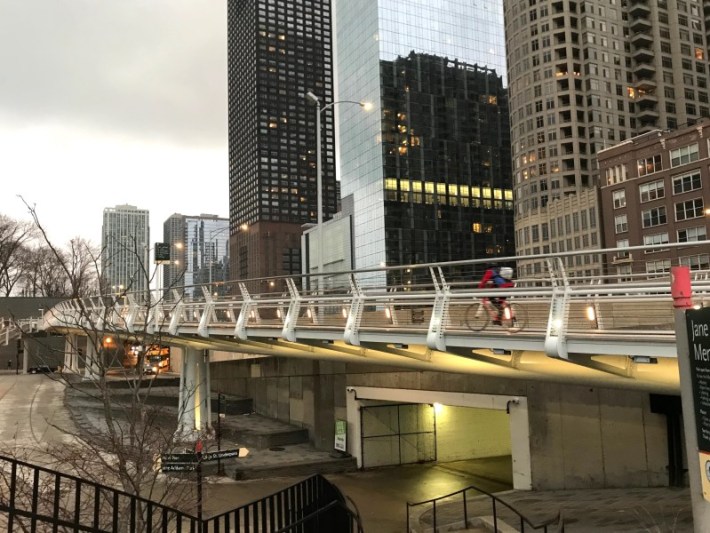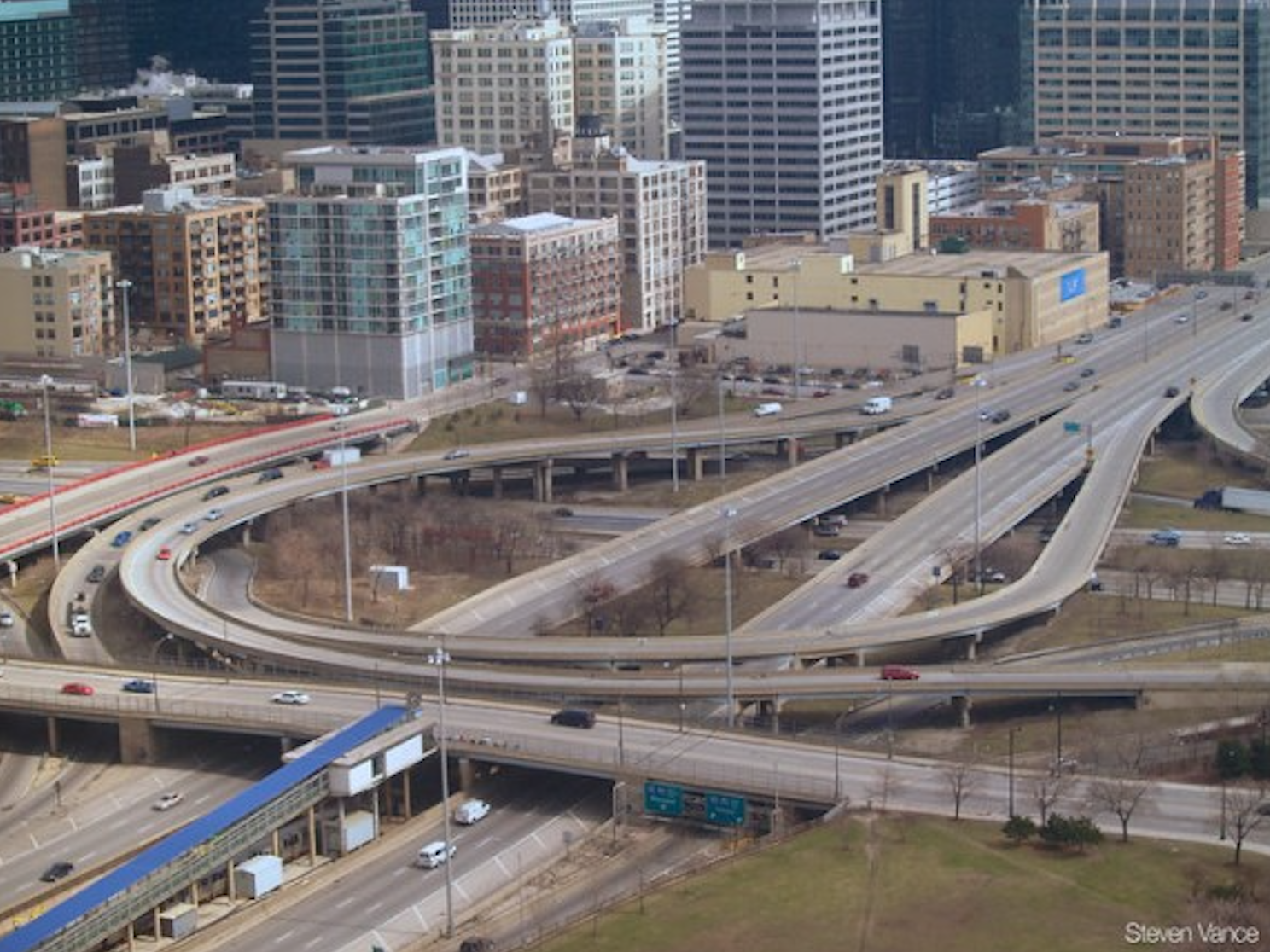Welp, don't say we didn't warn you that the Jane Byrne Interchange expansion project was going to be a counterproductive boondoggle, but it turns out that things are worse than we thought. According to Friday's Chicago Tribune report by Mary Wisniewski and Joe Mahr, the cost of the project has ballooned to a quarter-billion dollars more than the initial cost estimates, and it's several years behind schedule.
Back in February 2013, the Chicago Metropolitan Agency for Planning was considering whether or not to approve the Illinois Department of Transportation's plan to build new car lanes and three new flyovers at what was then called the Circle Interchange, the downtown spaghetti bowl confluence of the Dan Ryan, Kennedy, and Eisenhower expressways. IDOT justified the project by saying it would improve traffic congestion, reduce crashes, speed up travel times, and make it easier for truckers to drive through the interchange.
But Streetsblog's Steven Vance pointed out that CMAP's own analysis concluded that none of these improvements were guaranteed and warned that the project would lead to more car trips, more carbon emissions, and fewer transit trips. The interchange expansion was projected to convert 1,000 trips from transit to driving and increase carbon dioxide emissions by 39,000 metric tons each year. Moreover, CMAP predicted that drivers in the region would save a mere 1.2 seconds per trip if the project was built.
At the time, then-Active Transportation Alliance Executive Director Ron Burke suggested that the interchange project was a poor way to achieve transportation goals. “If you really want to address congestion in a long-term sustainable way, we need to give people alternatives to driving, especially driving alone,” he said. “We’re concerned about this emphasis on highway expansion at a time when the experience in Chicagoland and other areas shows us that it is, at best, a short-term solution to roadway congestion. In general it perpetuates land use and travel patterns that make us auto dependent creating a negative feedback loop. It’s not a sustainable way to address congestion.”
Needless to say, the interchange plan was approved. Fast forward seven years and this ill-conceived project has turned out to be a major financial fiasco, that's also running way behind schedule. According to the Tribune, when the work began in 2013 it was projected to cost $535.5 million and to be completed by June 2018. But at this point it's estimated to cost $796.5 million -- that's near 50 percent more than the original estimate. IDOT attributed the cost overrun to city of Chicago regulations and subpar soil conditions.
Per the 2019 Annual Update of the Jane Byrne Interchange Financial Plan provided by the state, the price increase includes $52.9 million in additional construction expenses and $24.8 million in new engineering costs. The document predicts that the work will be done by November 1, 2022 -- that's almost 4.5 years behind schedule. But the state cautioned that variables like weather could delay the work even longer.

In fairness, sustainable transportation projects can run over-budget and behind schedule as well. Back in 2012 the Navy Pier Flyover bike/ped bridge on the Lakefront Trail was projected to cost $45 million and take only a few years to complete. Since then, the cost estimate has expanded to $64 million, and the work, which started in 2014, has taken longer to build than the Sear Tower. It's currently slated for completion this spring.
However, while the Jayne Byrne Interchange expansion is making Chicagoland more car-dependent, the flyover will encourage more bike commuting by eliminating dangerous bottlenecks. And while the bridge is the most expensive bike infrastructure project in Illinois history, for the current cost of the interchange expansion, you could buy 12.5 Navy Pier Flyovers.
Read the Chicago Tribune article on the interchange expansion here.



